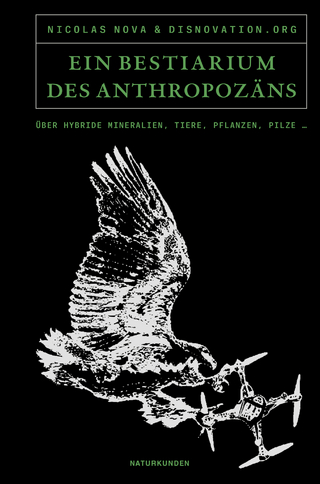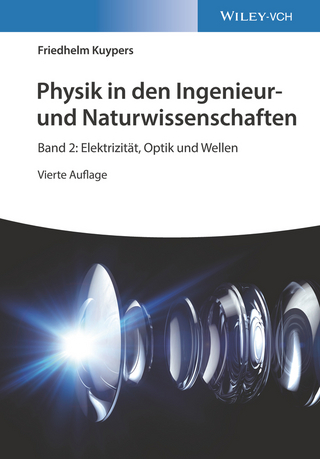
Handbook of Molecular Microbial Ecology
Seiten
2016
Delve Publishing (Verlag)
978-1-68095-827-0 (ISBN)
Delve Publishing (Verlag)
978-1-68095-827-0 (ISBN)
- Titel nicht im Sortiment
- Artikel merken
The study of microbial ecology can help us improve our lives through the use of microbes in environmental restoration, food production, and bioengineering of useful products such as antibiotics, food supplements, and chemicals. This text offers an introduction to the subject.
Microbes are significant drivers of the world’s ecosystems. Microbial ecology is the study of microbes in the environment and their interactions with each other. Microbes are the tiniest creatures on Earth, yet despite their small size, they have an enormous impact on us and on our environment. Microbial ecology can help answer some of our most practical questions such as “How can we improve our lives?” as well as basic questions such as “Why are we here?” Microbial ecology can show us our place in the cosmos -- how life originated and how it evolved, and how we are related to the great diversity of all other organisms. The study of microbial ecology can help us improve our lives through the use of microbes in environmental restoration, food production, and bioengineering of useful products such as antibiotics, food supplements, and chemicals. The study of these bizarre and diverse creatures that are everywhere yet nowhere to be seen is fascinating and a pursuit that appeals to the curiosity and playfulness in us. Most types of microbes remain unknown. It is estimated that we know less than 1% of the microbial species on Earth. Yet microbes surround us everywhere - air, water, soil. The vast majority of the world’s diversity and metabolic potential lies within micro-organisms, yet we are just beginning to understand and utilize this ultimate resource of biological diversity. Microbial populations are able to tolerate and to grow under varying environmental conditions, including habitats with extreme environmental conditions such as hot springs and salt lakes. Understanding the environmental factors controlling microbial growth and survival offers insight into the distribution of microorganisms in nature, and many studies in microbial ecology are concerned with examining the adaptive features that permit particular microbial species to function in particular habitats. The field of microbial ecology has been revolutionized in the past two decades by the introduction of molecular methods into the toolbox of the microbial ecologist.
Handbook of Molecular Microbial Ecology starts by looking at general Microbial ecology in Chapter 1 and then introduces some strategies for genome analysis on Chapters 2 and 3. On Chapter 4, the new concept of species in the metagenomics era is discussed. It continues by looking at how metagenomics data is obtained (chapters 5 to 10) and goes on by exploring some of the available tools for analysis, like databases (chapters 11 and 12) and computer assisted (Chapters 13 to 21) . It ends by covering various –omics, metatranscriptomics (chapters 22 and 23), and metabolomics (chapter 24) analysis in a large variety of habitats, which could not previously have been analyzed without metagenomic methodology.
Handbook of Molecular Microbial Ecology, gathering together some of the world’s leading experts, provides an invaluable introduction to the modern theory and molecular methods used in studying microbial ecology. Molecular microbial ecology represents a recent development in research methods and consists of utilising techniques of molecular biology to investigate the ecology of microorganisms. The application of molecular techniques is contributing to our improved understanding of the ecology of microbial inoculants. Indeed, molecular microbial ecology offers new tools to facilitate the detection and identification of microorganisms in the environment. It opens new possibilities for the exploration of the biodiversity of microorganisms and thus represents a step forward concerning the exploitation of microbial diversity in air and water. In addition, molecular microbial ecology provides strategies and techniques to assess the impact of microbial inoculants on the crop (i.e. effectiveness of the inoculant) and the soil environment (i.e. biosafety of the inoculant).
Microbes are significant drivers of the world’s ecosystems. Microbial ecology is the study of microbes in the environment and their interactions with each other. Microbes are the tiniest creatures on Earth, yet despite their small size, they have an enormous impact on us and on our environment. Microbial ecology can help answer some of our most practical questions such as “How can we improve our lives?” as well as basic questions such as “Why are we here?” Microbial ecology can show us our place in the cosmos -- how life originated and how it evolved, and how we are related to the great diversity of all other organisms. The study of microbial ecology can help us improve our lives through the use of microbes in environmental restoration, food production, and bioengineering of useful products such as antibiotics, food supplements, and chemicals. The study of these bizarre and diverse creatures that are everywhere yet nowhere to be seen is fascinating and a pursuit that appeals to the curiosity and playfulness in us. Most types of microbes remain unknown. It is estimated that we know less than 1% of the microbial species on Earth. Yet microbes surround us everywhere - air, water, soil. The vast majority of the world’s diversity and metabolic potential lies within micro-organisms, yet we are just beginning to understand and utilize this ultimate resource of biological diversity. Microbial populations are able to tolerate and to grow under varying environmental conditions, including habitats with extreme environmental conditions such as hot springs and salt lakes. Understanding the environmental factors controlling microbial growth and survival offers insight into the distribution of microorganisms in nature, and many studies in microbial ecology are concerned with examining the adaptive features that permit particular microbial species to function in particular habitats. The field of microbial ecology has been revolutionized in the past two decades by the introduction of molecular methods into the toolbox of the microbial ecologist.
Handbook of Molecular Microbial Ecology starts by looking at general Microbial ecology in Chapter 1 and then introduces some strategies for genome analysis on Chapters 2 and 3. On Chapter 4, the new concept of species in the metagenomics era is discussed. It continues by looking at how metagenomics data is obtained (chapters 5 to 10) and goes on by exploring some of the available tools for analysis, like databases (chapters 11 and 12) and computer assisted (Chapters 13 to 21) . It ends by covering various –omics, metatranscriptomics (chapters 22 and 23), and metabolomics (chapter 24) analysis in a large variety of habitats, which could not previously have been analyzed without metagenomic methodology.
Handbook of Molecular Microbial Ecology, gathering together some of the world’s leading experts, provides an invaluable introduction to the modern theory and molecular methods used in studying microbial ecology. Molecular microbial ecology represents a recent development in research methods and consists of utilising techniques of molecular biology to investigate the ecology of microorganisms. The application of molecular techniques is contributing to our improved understanding of the ecology of microbial inoculants. Indeed, molecular microbial ecology offers new tools to facilitate the detection and identification of microorganisms in the environment. It opens new possibilities for the exploration of the biodiversity of microorganisms and thus represents a step forward concerning the exploitation of microbial diversity in air and water. In addition, molecular microbial ecology provides strategies and techniques to assess the impact of microbial inoculants on the crop (i.e. effectiveness of the inoculant) and the soil environment (i.e. biosafety of the inoculant).
Patricia Marques obtained her PhD form University College Dublin in 2010. Her interests are on Microbiology and Parasitology. She is currently working as a Postdoc at University of Maryland Baltimore, USA on Chlamydia infections.
| Erscheinungsdatum | 16.03.2018 |
|---|---|
| Sprache | englisch |
| Maße | 152 x 229 mm |
| Themenwelt | Naturwissenschaften ► Biologie ► Allgemeines / Lexika |
| Naturwissenschaften ► Biologie ► Mikrobiologie / Immunologie | |
| Naturwissenschaften ► Biologie ► Ökologie / Naturschutz | |
| ISBN-10 | 1-68095-827-5 / 1680958275 |
| ISBN-13 | 978-1-68095-827-0 / 9781680958270 |
| Zustand | Neuware |
| Haben Sie eine Frage zum Produkt? |
Mehr entdecken
aus dem Bereich
aus dem Bereich
Über hybride Mineralien, Tiere, Pflanzen, Pilze ...
Buch | Hardcover (2023)
Matthes & Seitz (Verlag)
28,00 €
Band 2: Elektrizität, Optik und Wellen
Buch | Softcover (2022)
Wiley-VCH (Verlag)
39,90 €
Berufsbilder von und für Biologen und Biowissenschaftler
Buch | Softcover (2024)
Verband Biologie, Biowiss. u. Biomedizin in Dtl. e.V. (Verlag)
16,80 €


